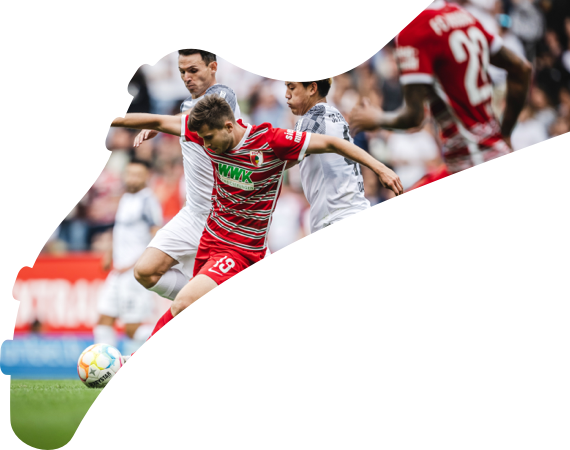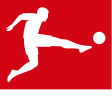
Union Berlin Fanzone: Getting to know the Bundesliga’s newest club
Union Berlin are the 56th and newest club to play in the Bundesliga, and have quickly become one of its most charismatic as the team from East Germany finally get their chance at the big time.
History
1. FC Union Berlin traces its history back 1906 when FC Olympia 06 Oberschöneweide formed from an amalgamation of three local clubs. A partnership and friendly divorce with former German champions BTuFC Union 1892 saw the club renamed as Union Oberschönewiede in 1909 as they decided to go it alone. Within five years they were in the top local division and by 1920 moved into the Sportanlage Sadowa, now known as the Stadion An der Alten Försterei – still their home today.
The club would go on to reach the German Championship final in 1923, where it lost 3-0 to Hamburg, but regional success continued to follow until falling behind Berlin’s financial powerhouses Hertha and Tennis Borussia, and the club’s steady footballing decline. It was during that period that the fans’ chant of “Eisern Union” (Iron Union) came about, reportedly in a match against Hertha, and references the club’s overwhelmingly working-class background.
After a slow start following World War II, the club began to rise from the ruins. It won the Berlin Cup in 1946/47 as a second-tier side before winning the league the following year and defending their cup. Things again changed quickly as Germany was divided following the war. The club was renamed BSG Motor Oberschönewiede when the East German government incorporated it into a factory, changing the colours from blue and white to the red and white still seen today. Not unusual for the times, the club underwent further mergers with clubs and industrial companies. By the time the Berlin Wall went up in 1961, the team found itself in the third tier of East German football as it splintered between the east and west of the city.
In 1966, however, they were back in the top flight and with a new name: 1. FC Union Berlin. It was a club intended for the people, in contrast to BFC Dynamo and Vorwärts Berlin which were the clubs of the East German security agencies and the army respectively. In 1968, Union claimed its only major honour with the FDGB Cup – the East German Cup – by beating league champions Carl Zeiss Jena 2-1 in the final. It propelled the likes of “Jimmy” Hoge, “Ate” Wruck and “Mäcki” Lauck to cult status amongst fans even today.
Union would yo-yo in the following 20 years until German Reunification in 1989, which for the club began with a first match against Hertha in almost three decades that became a party inside the Olympiastadion. As German football sought to integrate teams from east and west, Union found themselves in the third tier but pushing for promotion. Yet play-off disappointment and financial issues left Die Eisernen going nowhere.
That changed with the new millennium as they finished top of the Regionalliga Nord in 2000/01 to reach Bundesliga 2 for the first time. Union also made history in the DFB Cup by reaching the final. They may have lost to Schalke, but their appearance alone saw them qualify for a maiden UEFA Cup campaign – the first and so far only third-tier club ever to do so. Back-to-back relegations followed in 2004 and 2005, though, before a return to the second tier in 2009, where Union would remain in mid-table for a decade until a third-place finish in 2018/19 saw them set up a play-off clash with VfB Stuttgart, who they beat on away goals to secure a maiden Bundesliga promotion. Their second season in the top tier then saw them qualify for Europe once again, on this occasion for the inaugural UEFA Europa Conference League after finishing seventh.
Honours
Third division (2009)
East German Cup (1968)
5x Berlin Cup (1947, 1948, 1994, 2007, 2009)
2x Berlin/Brandenburg Championship (1920, 1923)
Gauliga Berlin-Brandenburg (1940)
Oberliga Berlin (1948)
German championship runners-up (1923)
DFB Cup finalist (2001)
Coach
A two-time Swiss champion with Basel, Urs Fischer took over at Union for the start of the 2018/19 Bundesliga 2 season. It was the former Switzerland international’s first job outside of his homeland but it proved to be a great decision for both club and coach as Union achieved a first-ever promotion to the Bundesliga in Fischer’s first season in charge. His second saw a comfortable finish in 11th – only behind city rivals Hertha on goal difference – before they stormed to seventh in 2020/21.
Star man
Union have never been about big names, but they perhaps realised that the odd star wouldn’t go amiss now they’re in the big time. That was clear with the summer 2020 signing of the maverick Max Kruse. The 33-year-old former Germany international immediately took the Die Eisernen to another level with his 11 goals and five assists from only 22 league appearances the season just gone.
Last season
An opening 3-1 defeat at home to Augsburg saw diagnoses of second-season syndrome quickly suggested, but they were well off the mark. It turned out to be Die Eisernen’s only loss at home all season and one of only eight all told. In fact, they were the only team not to lose to champions Bayern Munich in 2020/21. Despite external voices eventually framing them as European contenders, the word from within the club was nothing more than “let’s see”. They were simply playing it down for a bit of drama, which played out on the final day in front of 2,000 fans at the Alte Fösterei when Kruse scored an added-time winner against RB Leipzig – the only other Bundesliga club in what was once East Germany – to secure seventh place and a spot in the new Europa Conference League.
Watch: Union's 2020/21 season recap

The stadium
The Stadion An der Alten Försterei (Stadium at the old forester’s house) has been the home of Union and its predecessor clubs since 1920. It is located in the southeast of Berlin in the district of Köpenick and currently holds 22,012 spectators. It also plays host to an annual Christmas carol event on 23 December for fans and friends of the club which sees almost 30,000 in attendance. It is now seen as an important part of the club’s identity and has been copied in various cities around Germany.
Watch: Union and the Alte Försterei bid farewell to one of their own

The city
The capital of Germany, Berlin is the nation’s largest city and one of its most diverse. It therefore has a little something for all the 30+ million tourists who visit each year.
An icon of the city and Germany itself, the Brandenburg Gate is the place to have your selfie to make sure your friends know you were in Berlin. The 220 ft tall Siegesäule Victory Column sits opposite the iconic Reichstag (Germany’s parliament), while the 4.7-acre Holocaust Memorial is also just around the corner.
While most of the Berlin Wall was torn down with reunification in the 1990s, small sections do still exist, and guided tours are an excellent way to see those remnants and understand the political struggle it represented.
On lighter notes, the Rathaus Schöneberg is the site of John F. Kennedy’s famous “Ich bin ein Berliner” speech, while the “KaDeWe” is the largest department store in continental Europe.
Berlin’s nightlife and music scene are also legendary, so it’s always well worth checking out in advance what’s on during your visit. For those who prefer a quieter time, the city has vast expanses of greenspace, with the Tiergarten being one of the largest and most popular. The Zoologischer Garten also dates back to 1844 and is Europe’s most visited zoo.
Berlin is simply a city for everyone. Take the time to research exactly what interests you most – Berlin will have something for you.
Getting there
Despite its status as Germany’s capital and largest city, Berlin has few intercontinental flights. Berlin Brandenburg Airport finally opened in late 2020 but is primarily a hub for low-cost European airlines. United Airlines are currently the only US carrier to offer direct year-round flights to Berlin from Newark, although this is expected to change as travel restrictions are eased due to the COVID-19 pandemic. Frequent and cheap flights, however, make connections in Europe simple for distant travellers. Berlin is also connected to Munich and Frankfurt, Germany’s main international airports, by regular flights and high-speed ICE train services.
Getting to the Stadion An der Alten Försterei
The closest train station to the ground is Köpenick, which is a 10-15-minute walk away and served by the S3 line. The other side of the stadium can also be reached from the tram stop Alte Försterei using lines 27, 60,61, 67, 68 or M17
Buying tickets
Union matches are almost always sold out, but tickets can still be bought via the official club website HERE.
Watch on TV
If you can’t make it to the stadium, Bundesliga matches are broadcast around the world. ESPN provides coverage in the United States, while BT Sports are the exclusive broadcaster in the United Kingdom. In Germany, Sky Sports show the majority of matches, with DAZN hosting one match per week.
Buying the kit
You can get your own Union jersey from the official club shop.
Related news

Wirtz shines in Leverkusen's Gladbach win
The Germany international's brace, alongside a Patrik Schick goal, secured a comfortable 3-1 win for Leverkusen over the Foals.

How have Leverkusen returned to form?
With Xabi Alonso's men racing into title contention with eight league wins on the bounce, we assess what's going right at the BayArena.

The 2024/25 relegation battle
With the second half of the season now underway, over a third of the teams are in danger of the drop.


